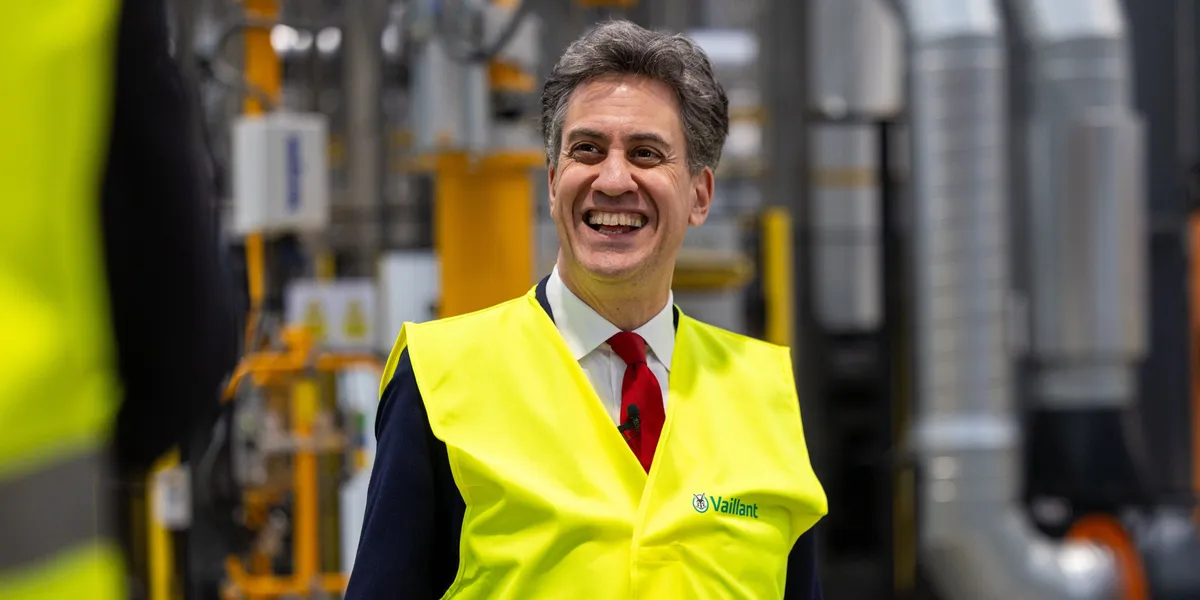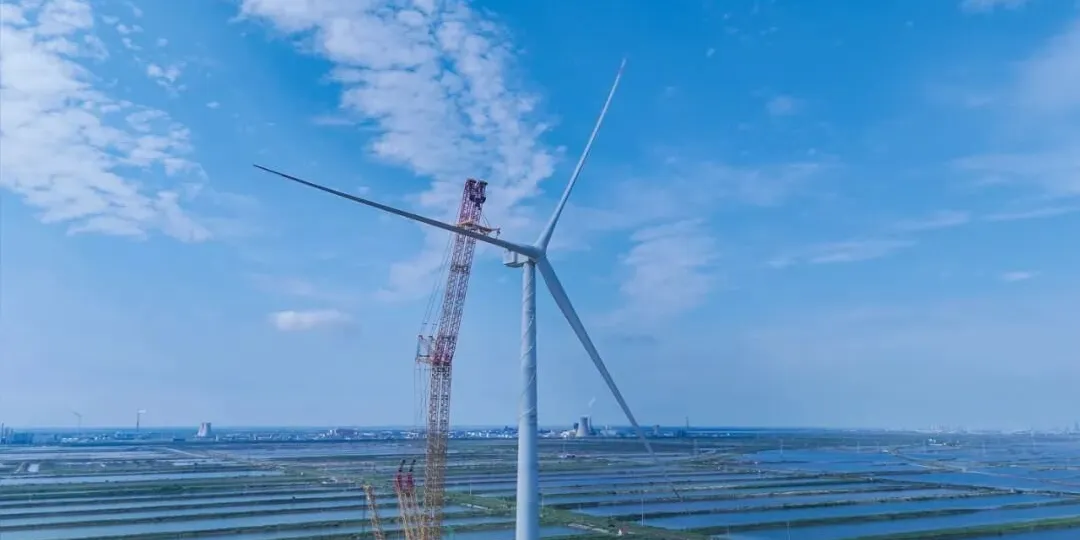I read somewhere this week that President Trump’s new 50% tariff on copper is going to make stealing the pipes out of walls a more lucrative career choice for young Americans than most. Say what you will about what that implies about the general state of things, but behind the joke is a veil of uncomfortable truth. At a time when we really need to be building as much as we can, as cost-efficiently as possible, to meet electric load growth projections, the President continues to make it more expensive and challenging to do so.
“Today we’re doing copper,” he said to his Cabinet this week, as if it’s a given that such critical mineral tariffs are for Tuesdays and steel is for Wednesdays and iron Thursdays and so on, like we’re all caught in some Twilight Zone episode of Sesame Street and we can’t stop counting (or Counting, if you want to take the simile the rest of the way).
This would mark the fourth across-the-board tariff Trump has imposed during his second term, as CNN points out, joining imported cars and parts (25%), imported steel (50%), and imported aluminum (50%). I don’t need to explain to anyone reading this website why such duties are damning to the people and companies trying to build electric infrastructure to satisfy power-hungry data centers and support onshoring of industries and electrification en masse, BUT BOY IS IT TEMPTING.
Instead, I’m going to use this space for its intended purpose, celebrating some of the most impactful financial finagling and project development updates of the last week or so. When the weekend finds you, give it a hug for me, and be good to one another.
Heliene closes on 45X ITC Transfer with US Bank
As you may have heard, the recently passed U.S. budget reconciliation bill significantly shortens the runways for many solar and wind technologies and projects for capitalizing on investment and production tax credits, but kept credit sale and transferability intact. That’s music to Heliene CEO Martin Pochtaruk’s ears.
The North American manufacturer recently announced the sale of 2025 Section 45X Advanced Manufacturing Production Tax Credits, crediting the environmental finance leadership of Minneapolis-based U.S. Bank. Heliene’s U.S.-made solar modules feature a high volume of domestically-sourced components, and the company employs more than 500 people at its two Minnesota facilities.
This transaction marks the second tax credit transfer sale completed by Heliene in the past year. In September 2024, the company sold an estimated $50 million in 2023 and 2024 45X tax credits in one of the first deals of this kind for the solar manufacturing industry.
“We’re very proud to have worked with U.S. Bank on our second 45X tax credit transfer deal,” stated Pochtaruk. “In monetising these additional tax credits, we can maintain our commitment to building a stronger, domestic solar supply chain and grow our Minnesota workforce to meet the target of American energy dominance.”
Heliene’s annual U.S.-based domestic solar module manufacturing capacity is up to 1.3 gigawatts (GW).
Invenergy Fires up Indiana Solar Farm
Chicago-based do-it-all developer Invenergy has announced the commencement of operations at the 250 megawatt (MW) Fairbanks Solar Energy Center in Sullivan County, Indiana. Invenergy led the development and construction of the facility (pictured above), which has been acquired by Northern Indiana Public Service Company (NIPSCO).
Fairbanks Solar provides enough electricity to power more than 50,000 American homes and businesses. It supported nearly 275 local jobs during construction. Invenergy Services is providing operations, maintenance, and plant services for the facility, employing four full-time staff members. The facility will also invest over $125 million in the local Sullivan County community throughout its lifespan.
“We’re proud to have partnered with NIPSCO and the local community to bring Fairbanks Solar online—the first of multiple Invenergy-developed projects in Sullivan County,” said Michael Kaplan, Invenergy’s senior vice president of development.
“Projects like the Fairbanks Solar Energy Center are an important component of NIPSCO’s energy generation portfolio,” added Vince Parisi, president and COO at NIPSCO. “Reliable and cost-effective power sources are essential to Indiana’s energy future.”
Fairbanks Solar is Invenergy’s second solar facility in Indiana, part of a robust development portfolio of clean energy solutions across 15 Indiana counties. In Sullivan County alone, Invenergy’s projects include the Trade Post Solar Energy Center, currently under construction and anticipated to reach commercial operations in 2026, and the Sycamore Riverside Energy Center, a natural gas project currently in development. In addition, the East terminus of Grain Belt Express, the largest transmission line in U.S. history, will be located in Sullivan County.
Utilities in the Midwestern United States are tackling tough challenges posed by increasingly extreme weather, aging infrastructure, and an ongoing race to integrate renewable energy while maintaining grid reliability. State decarbonization laws add complexity to the process of bringing power generation online, and as utilities transition from fossil fuels to cleaner alternatives, they are simultaneously managing supply chain issues, labor shortages, and new cybersecurity risks. Service providers must modernize their infrastructure to satisfy increasing demand while keeping pricing affordable, which is a tall task for any-sized utility.
A new regional DISTRIBUTECH event, DTECH Midwest, will provide a unique opportunity to dive into the specific issues faced by the power industry in Midwest and includes tailored content for municipal and cooperative utilities.
Registration is now open! Join us from July 14-16, 2025, in Minneapolis, MN. Learn more about what you can expect here.
Lightshift Closes on $40M Credit Facility
Virginia-HQ’d energy storage developer, owner, and operator Lightshift Energy has closed on a credit facility for up to $40 million with Aiga Capital Partners, an institutional investment platform that specializes in innovative financing solutions for sustainable infrastructure assets. The facility will “serve as a strategic tool to support Lightshift’s rapidly growing portfolio,” funding interconnection and power purchase agreement (PPA) security requirements, equipment deposits, and more.


“This financing milestone strengthens our balance sheet and positions Lightshift to execute with speed and certainty as we bring more of our high-impact projects online,” affirmed Rory Jones, co-founder and managing partner at Lightshift Energy. “We are pleased to partner with Aiga, whose innovative approach to structured credit supports our mission to advance a more resilient, capable and lower-cost grid.”
Lightshift says the expandable credit line comes at a critical time as the company transitions a significant portion of its pipeline into construction during the second half of 2025 and into 2026, allowing it to maximize tax credit eligibility.
Lydian Energy Scores $233M for Project Financing
Independent power producer (IPP) Lydian Energy has closed on its first institutional project financing. Totaling $233 million, backed by ING and KeyBank, it supports the development of three battery energy storage systems (BESS) in Texas’ fast-growing ERCOT power market.
ING served as the lender for the Pintail and Crane projects, located in San Patricio and Crane Counties, Texas, respectively. The two systems, each sized at 200 MW/400 megawatt-hours (MWh), represent a combined investment of approximately $139 million. KeyBank provided a $94 million financing package for Headcamp, a 150 MW/300 MWh project in Pecos County. KeyBanc Capital Markets also structured the financing package for Headcamp.
All three projects are developed under Excelsior Energy Capital’s Fund II, which recently closed at more than $1 billion, and advance Lydian’s strategy to deliver reliable, affordable renewable energy that strengthens grid performance in key power markets like ERCOT. The facilities are currently under construction and are expected to be placed in service in Q4 2025.
“We are happy to have the support of ING and KeyBank, which recognize both the value of battery storage in today’s grid and the capabilities of our development and delivery platform. We are proud to partner with these leading financial institutions to help deliver the next generation of clean and reliable power in Texas,” stated Basilio Guerrero, CFO at Lydian Energy.
The tax credit bridge financings from ING and KeyBank are being complemented by co-investment capital from Excelsior’s Fund II limited partners. Lydian is actively pursuing additional financing for a broader pipeline of projects expected to start construction later this year. Lydian’s current portfolio includes 20 solar and storage projects totaling 4.7 GW of capacity.
“In the midst of a lot of noise, these financings are a reminder that capital flows where infrastructure is satisfying fundamental needs of our society – in this case, the need for reliable, sustainable, domestic, and affordable energy,” said Anne Marie Denman, co-founding partner at Excelsior Energy Capital and chair of the board at Lydian Energy.
Recurrent Energy Electrifies Arizona’s Biggest Battery
Solar and storage developer, owner, and operator Recurrent Energy announced commercial operation of Arizona’s biggest BESS on July 7. The 1,200 MWh Papago Storage facility in Maricopa County, AZ, is now dispatching stored energy to Arizona Public Service (APS), the state’s largest electric utility, in time to help meet rising electricity demand during the summer season.


Papago Storage is the first of three Recurrent Energy (a Canadian Solar subsidiary) projects with tolling agreements in place with APS. Collectively, the three projects will provide 1,800 MWh of battery storage capacity and 150 MWac of solar generation. Once all are fully operational, they will store and deliver enough electricity to serve the equivalent of 72,000 homes for four hours, along with solar generation capacity sufficient to support approximately 24,000 homes annually.
“Bringing online one of our state’s largest battery storage projects during this critical time when energy demand is growing rapidly will help our utilities execute an all-of-the-above response to that demand and further diversify Arizona’s energy resources,” Kevin Thompson, chair of the Arizona Corporation Commission, noted.
Canadian Solar’s majority-owned subsidiary, e-STORAGE, served as the turnkey engineering, procurement, and construction provider for the project and will continue to support Papago Storage under a long-term service agreement.








